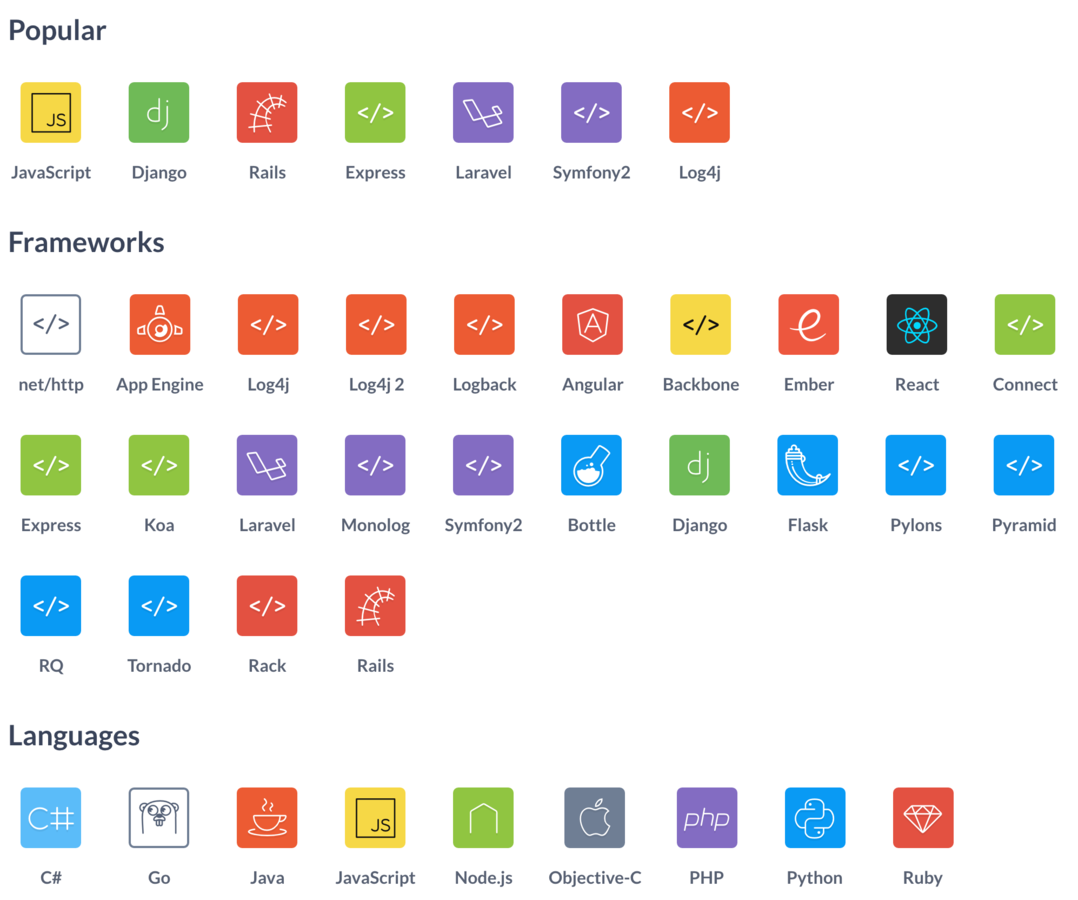Sentry

Because developers need super powers to track exceptions
WHAT IS SENTRY?

BASICS
- Language-agnostic error tracker
- Semi-automatic grouping of incidents
- Filterable tags
- Ownership through assignment
- Resolve or snooze to mark issues as done
- Easy-to-implement protocol
- Extensive REST API

Frameworks & Languages
-
getsentry.com
- Small plan starts at 29 USD/month
- 9 USD/month for hobbyists not available anymore
-
Self-hosted
- 100% open source
- Tricky to set up
HOSTING
How to use it

JS
<script src="https://cdn.ravenjs.com/3.0.4/raven.min.js"></script>Raven.config('https://<key>@app.getsentry.com/<project>').install()try {
doSomething(a[0])
} catch(e) {
Raven.captureException(e)
}Install
By default, Raven makes a best effort to capture any uncaught exception.
To report errors manually :
Config DNS
NojeJS
try {
doSomething(a[0])
} catch(e) {
Raven.captureException(e)
}Install
To report errors manually :
Config
npm install raven --savevar raven = require('raven');
// Config DNS
var client = new raven.Client('https://<key>:<secret>@app.getsentry.com/<project>');
// Use Sentry as global error tracker.
client.patchGlobal();
-
Integrating Sentry is super easy
- Plays well with issue trackers etc.
- White-/Blacklisting errors can be tricky
Conclusion
Questions ?
To be continued

deck
By Vincent Quagliaro
deck
- 909

